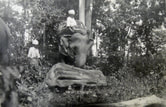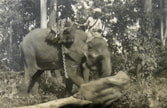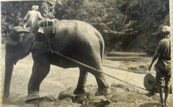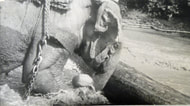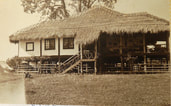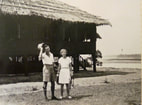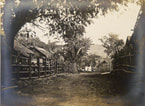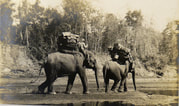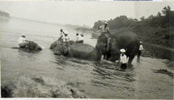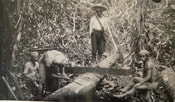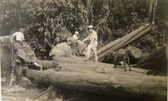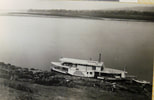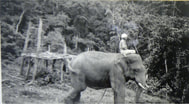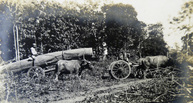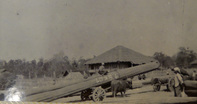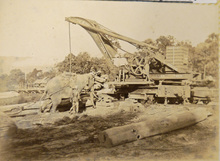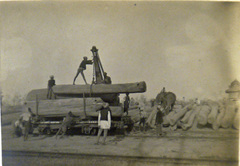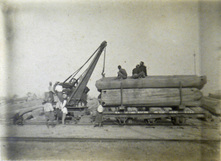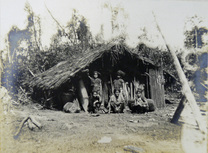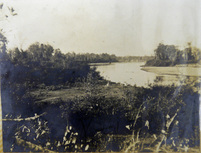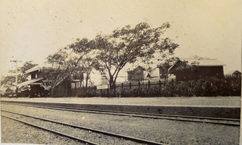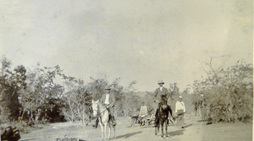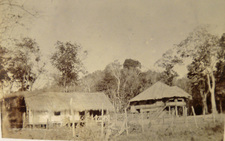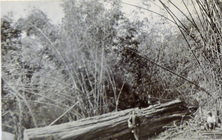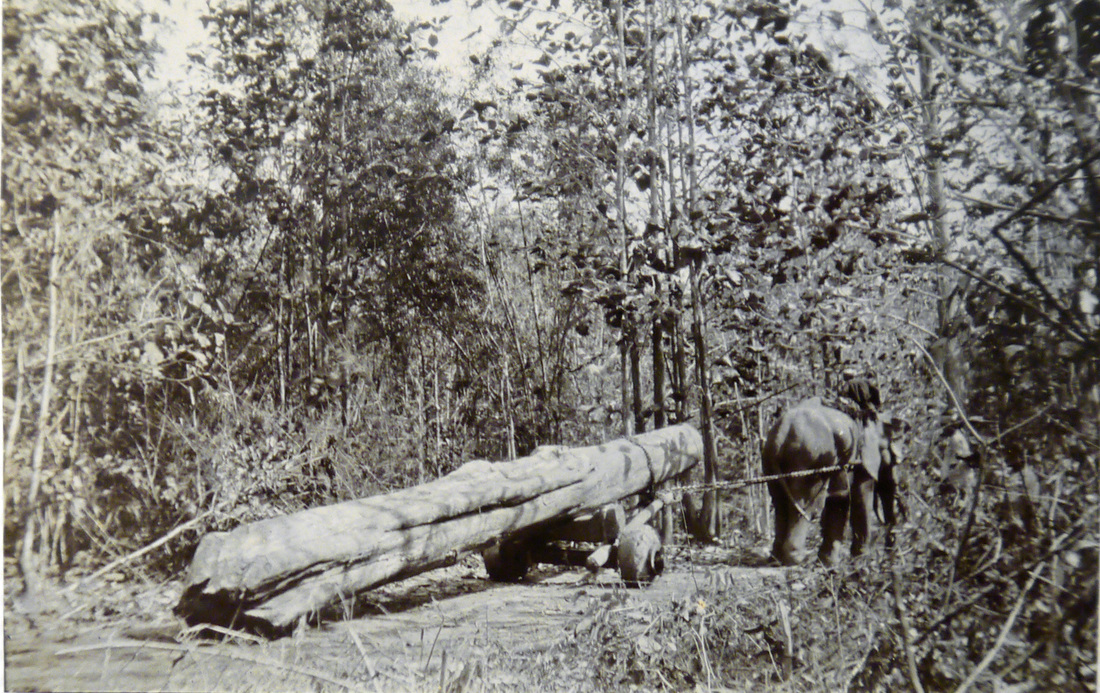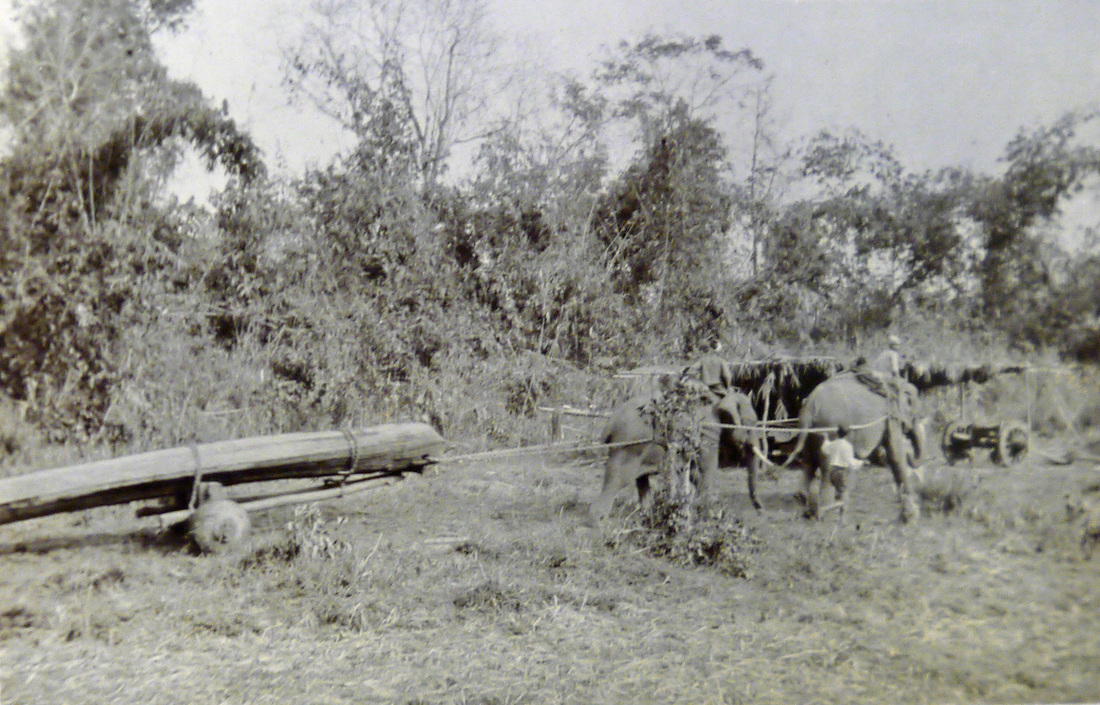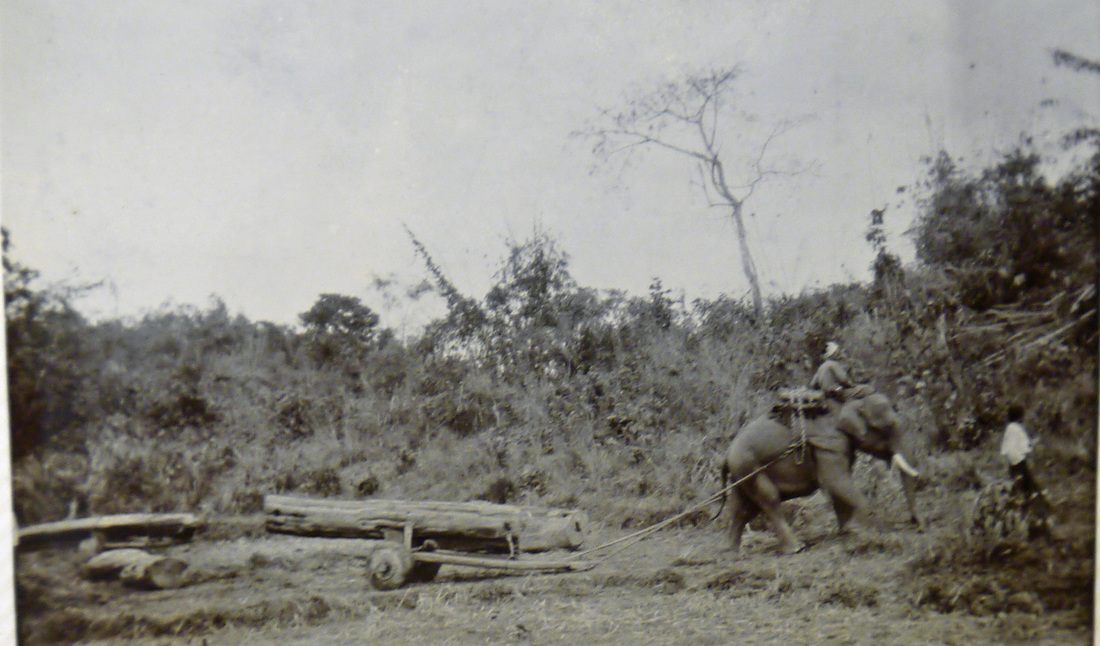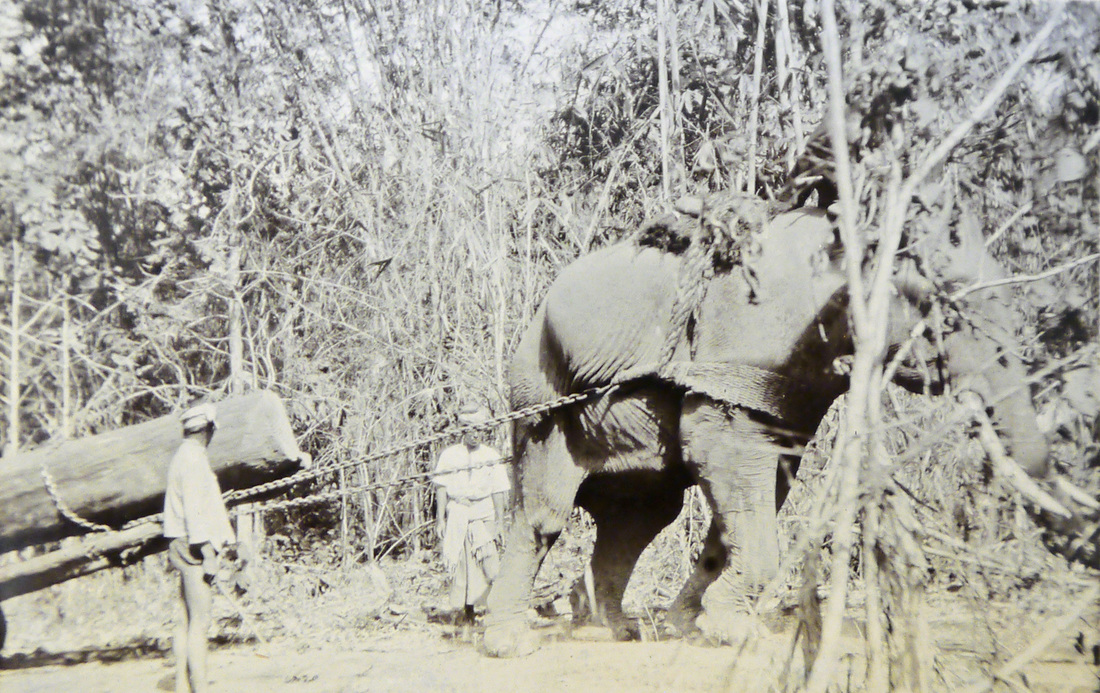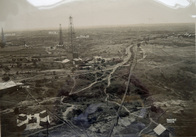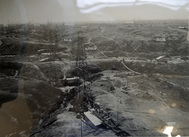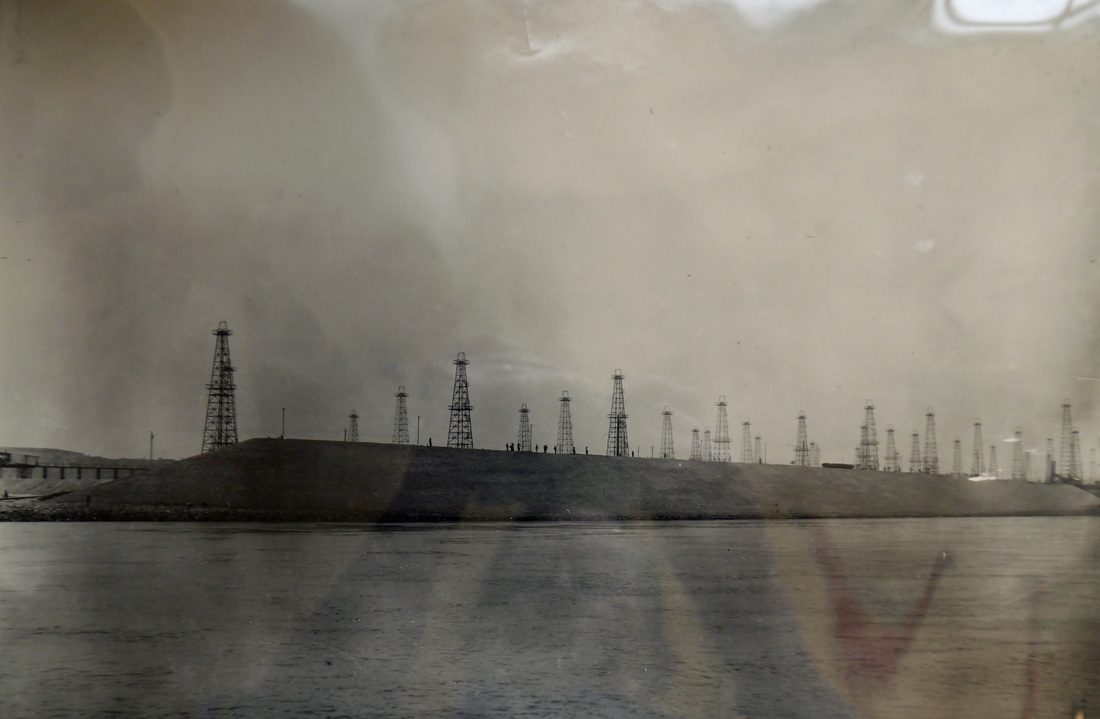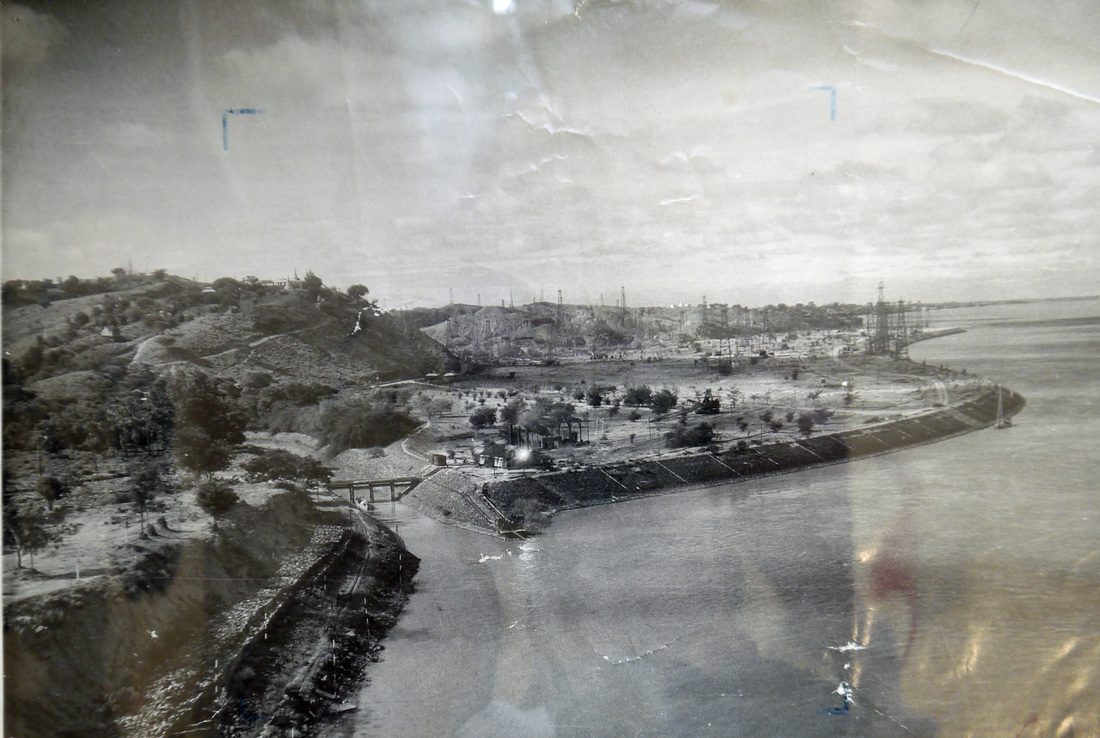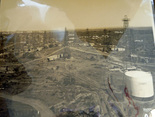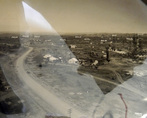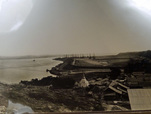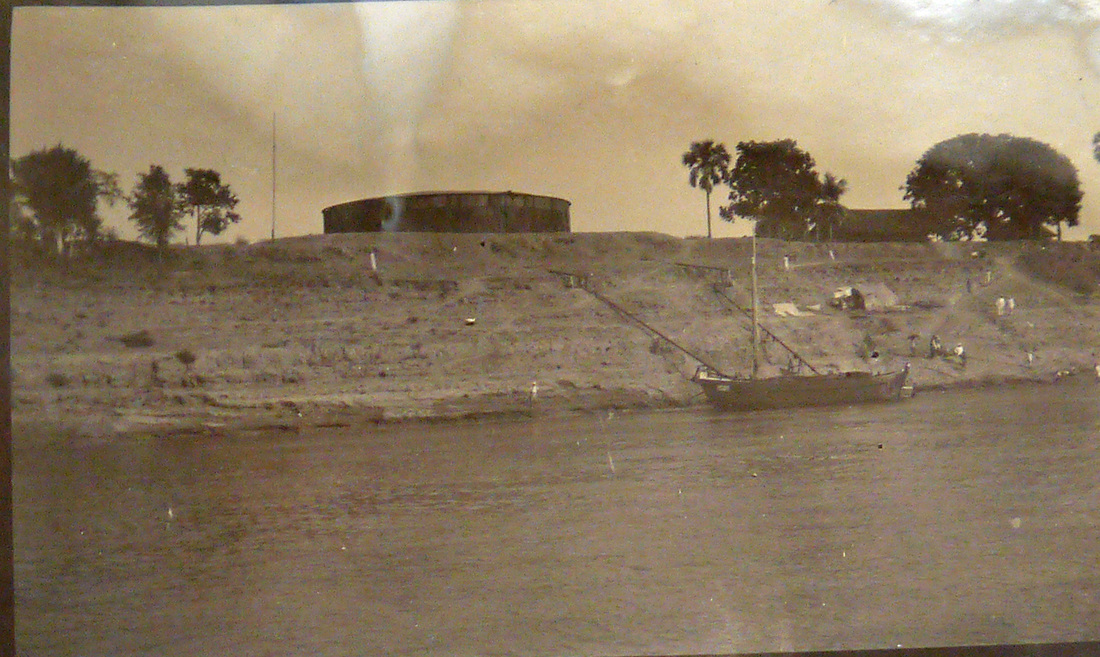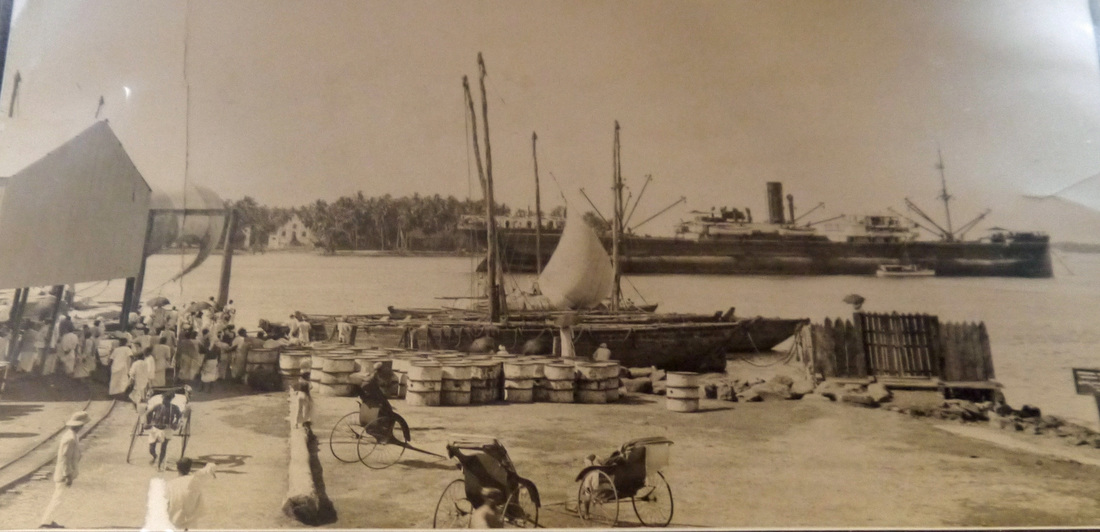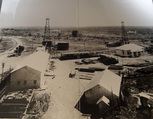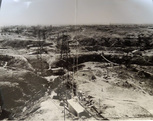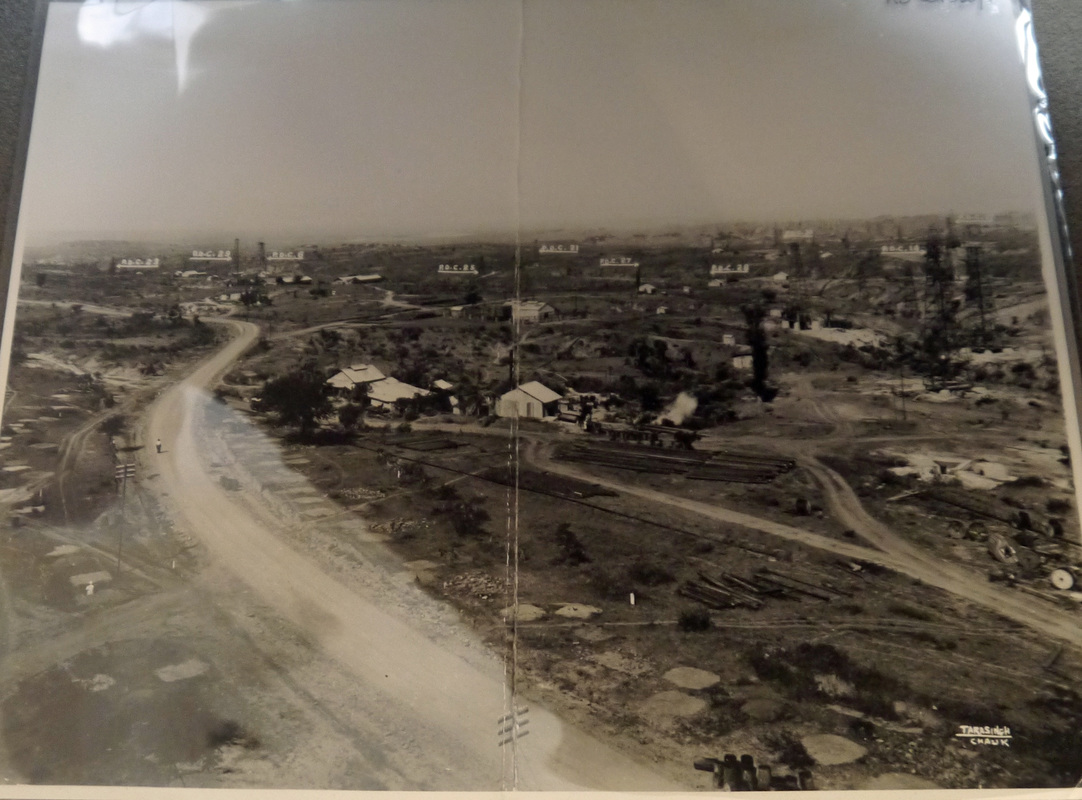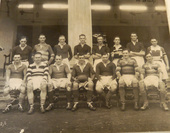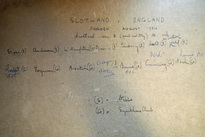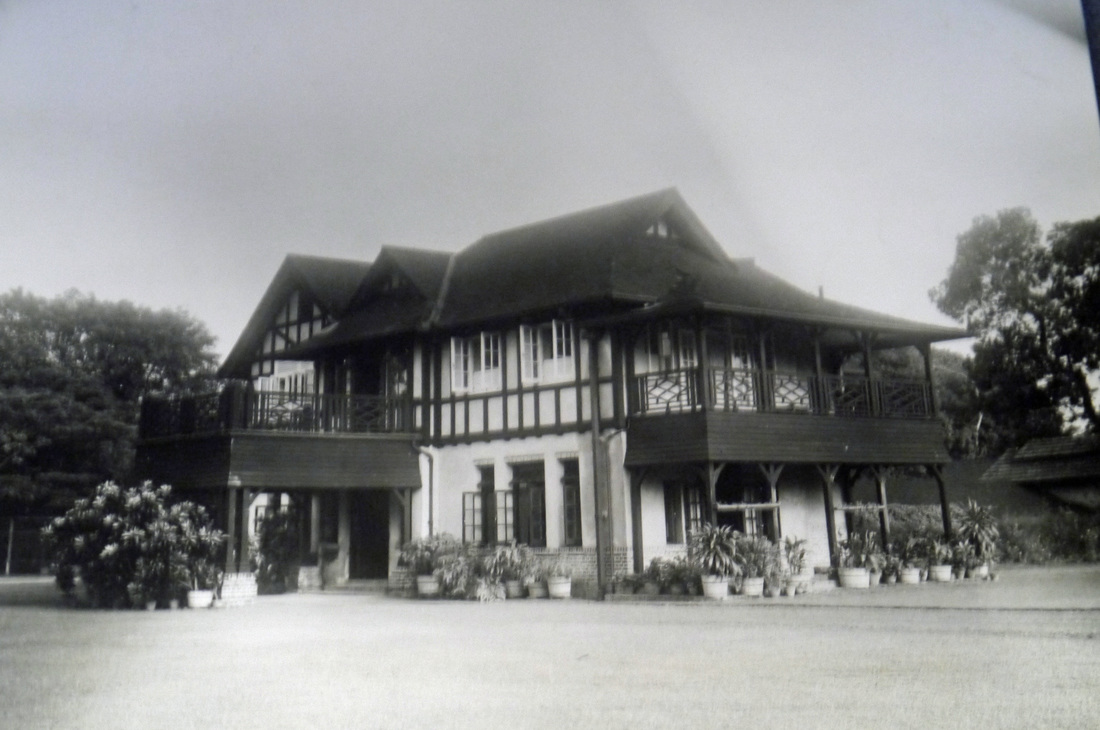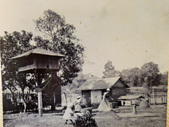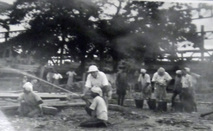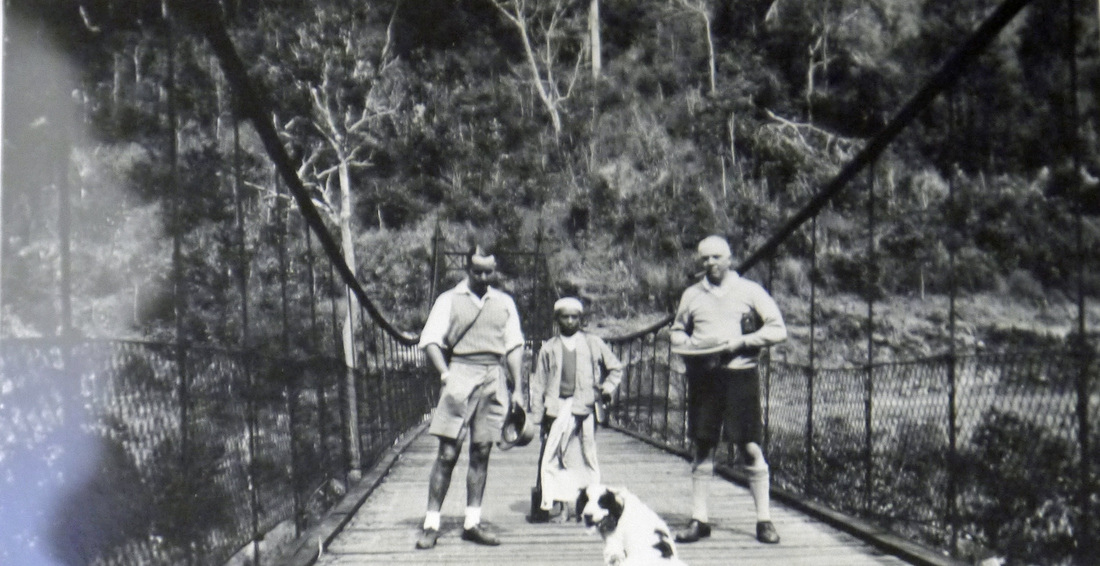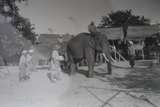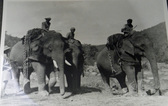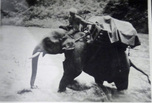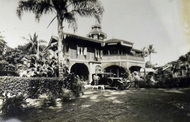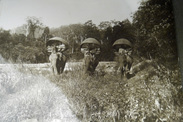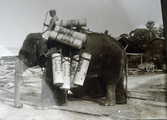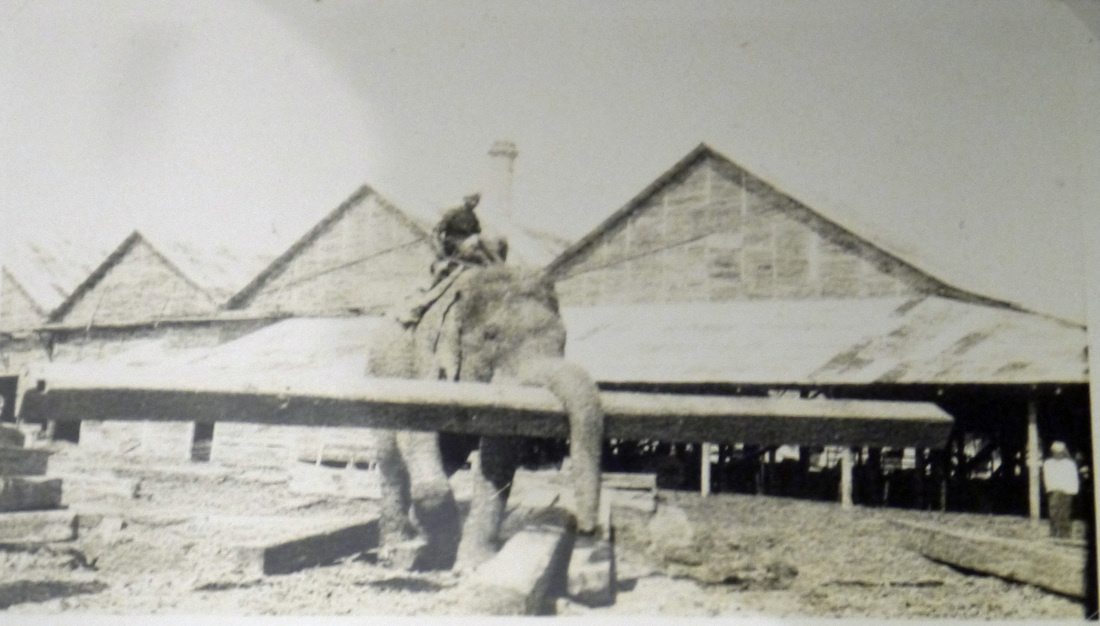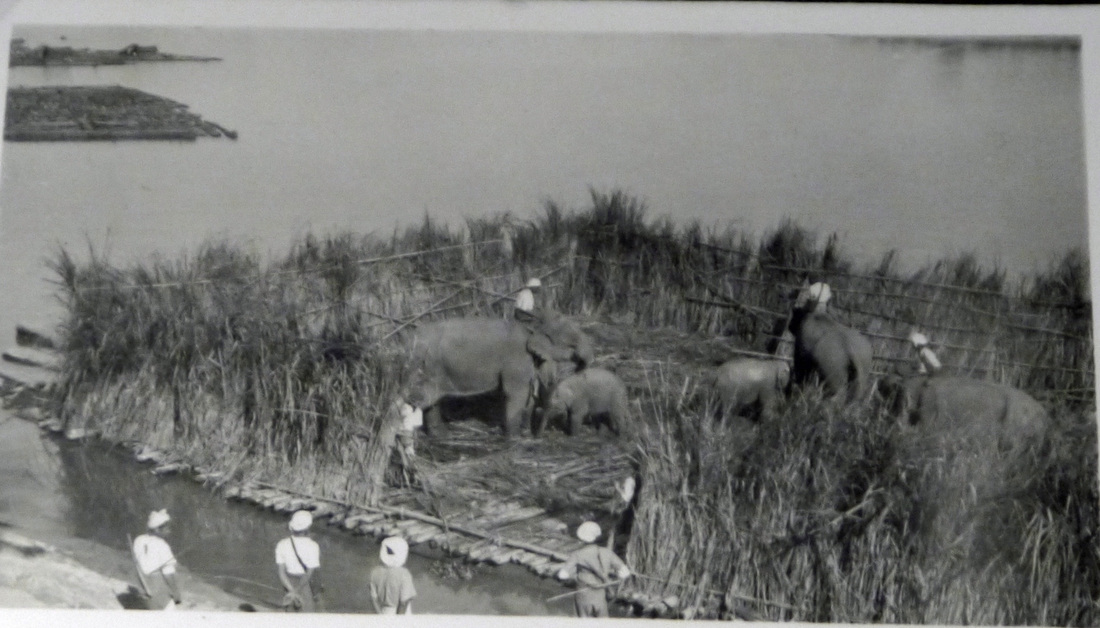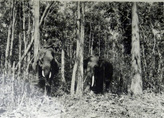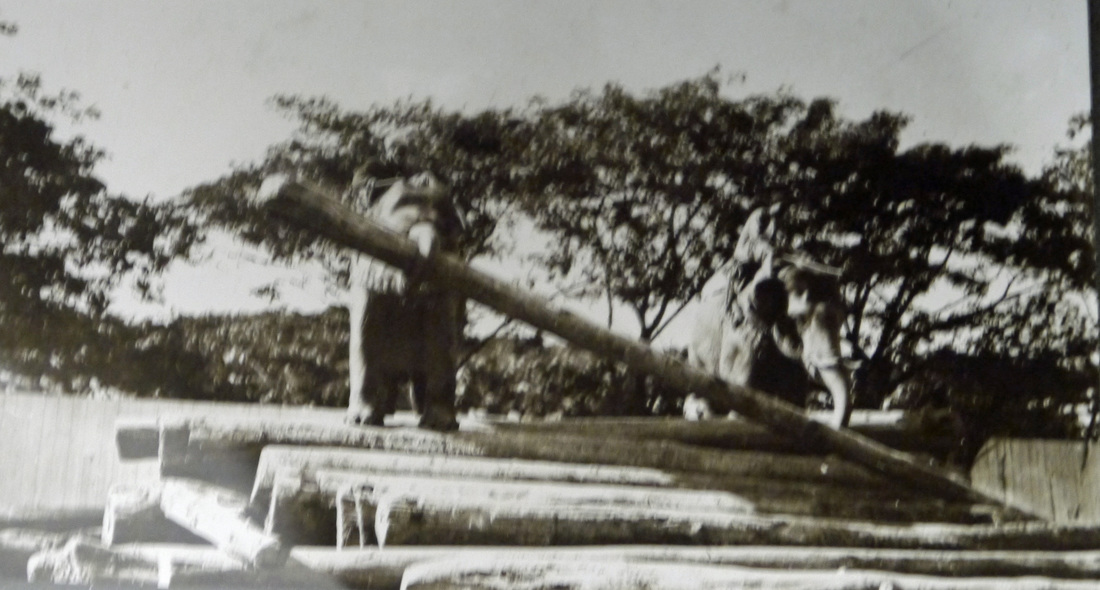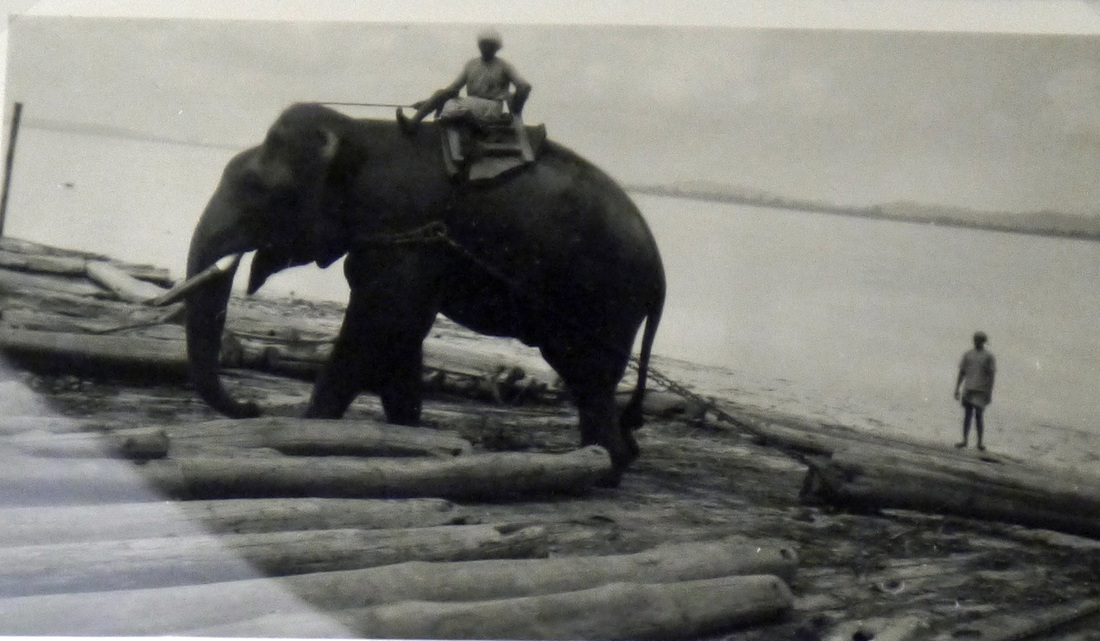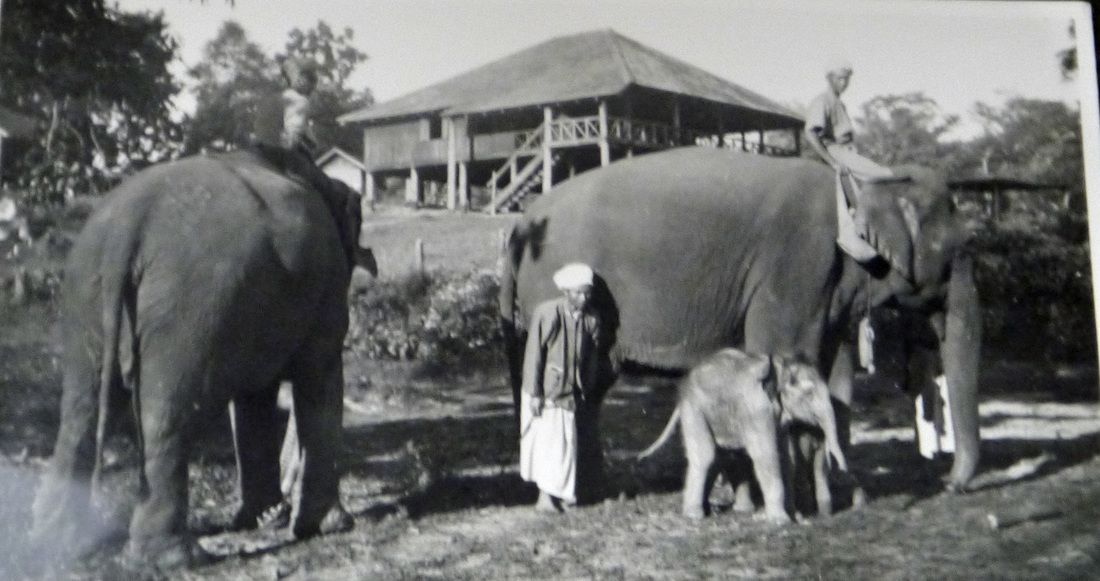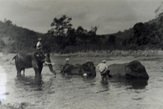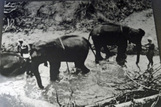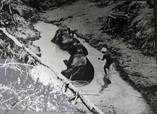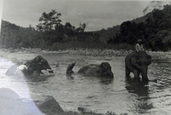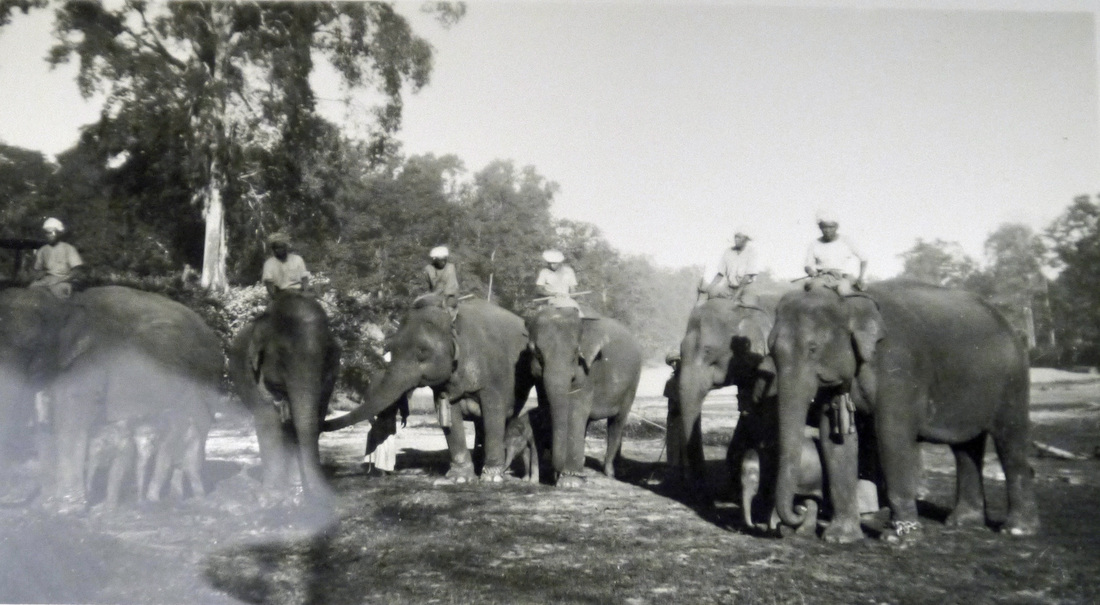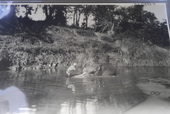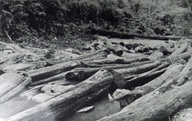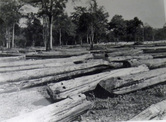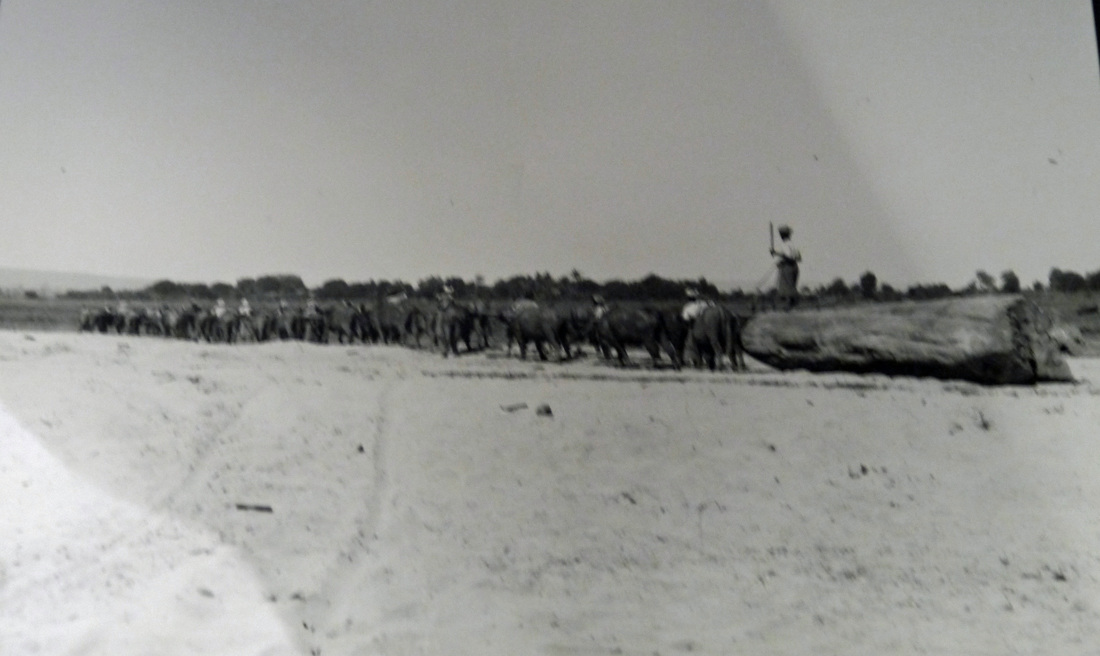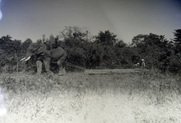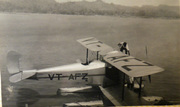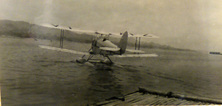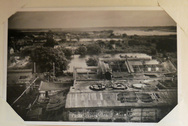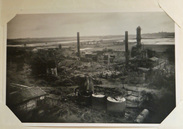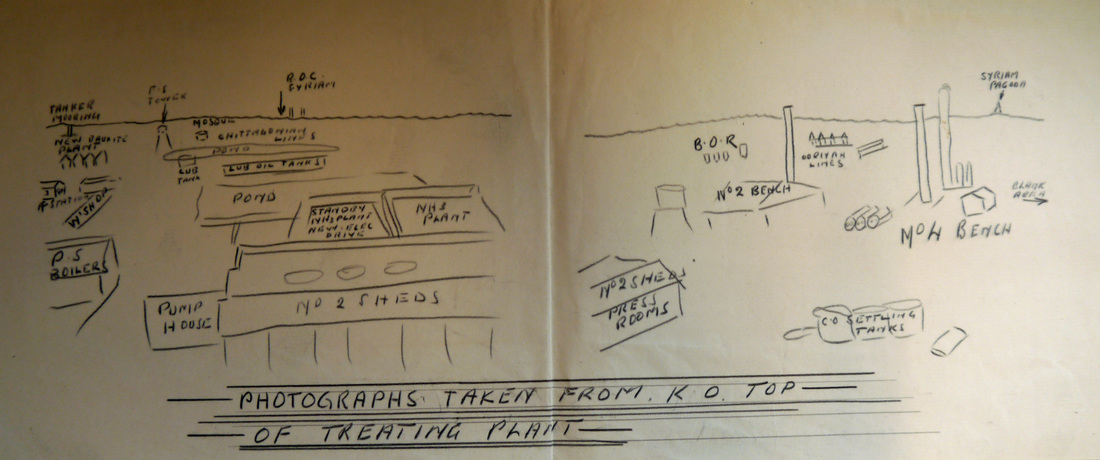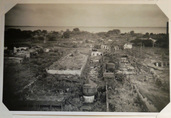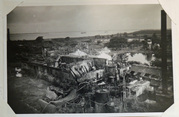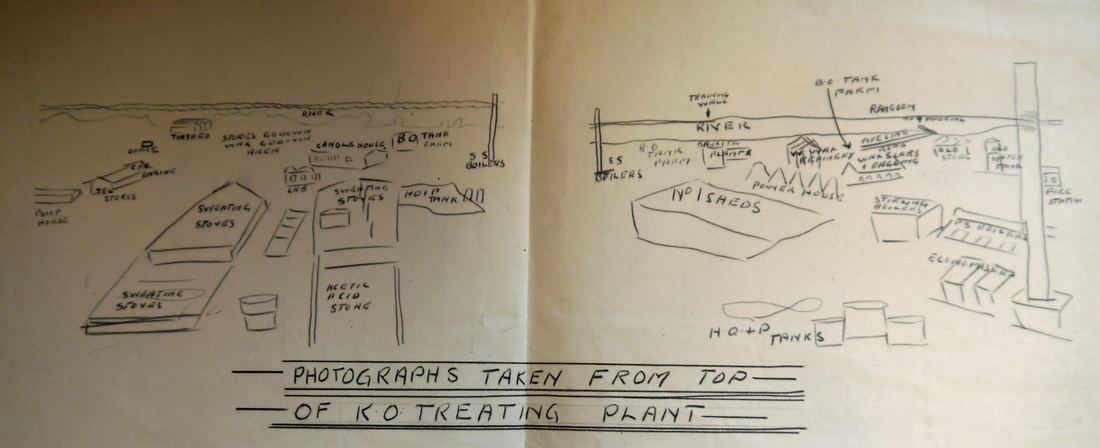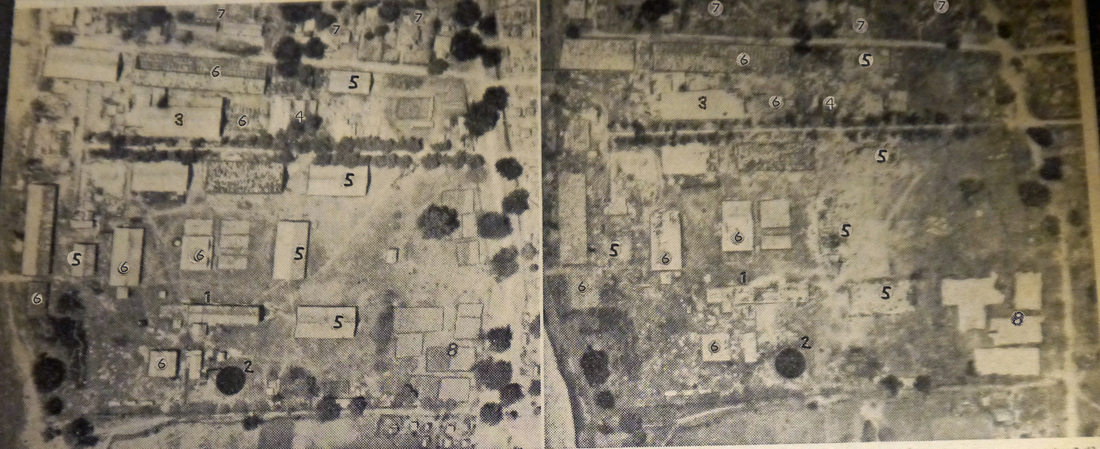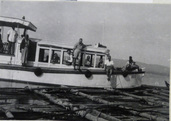Sentry Page Protection
Please Wait...
Teak extraction operations in Burma
Teak operations in Burma were started by Steel Brothers around the beginning of the 20th century. Export of “Pegu Plank” from the early Burmese Kingdoms, due to teak’s anti-splintering properties, had expanded enormously owing to naval demand.
Teak extraction then was wholly in the hands of the powerful Bombay Burma Trading Corporation (Wallace Brothers) but with the advent of British Administration forest operational control was greatly tightened up. This resulted in the B.B.T.C. being “fined” and punished by the Government who cancelled their Teak Concessions and awarded them to Steel Brothers.
Steel Bros. finally had Teak Concessions in the following areas:-
Lower Burma
(i) The Thoungyin drainage of the Kawkareik District, east of the Dawna mountains, with its forest H.Q. at Mepale. Operations here are shown in a separate photograph album.
(ii) The Upper Sinthe and Ngalaik drainage of the Pegu Yomas plus the small teak concessions at Myittha on the Shan Plateau between Thazi and Kalaw, with its forest H.Q. at Pyinmana.
(iii) The Nawin drainage of the Pegu Yomas with its forest H.Q. at Prome.
(iv) Latterly the Pani drainage in the Thayetmyo district of the Arakan Yomas (Irrawaddy river west bank) with its forest H.Q. also at Prome.
Upper Burma
(i) The Mandalay Rafting Agency with H.Q. at Mandalay dealing with all rafting of teak logs from above Mandalay to Rangoon together with the Royalty measuring thereof.
(ii) The Nampa and Mosit drainage on both sides of the 2nd Defile of the Irrawaddy river with its forest H.Q. at Bhamo.
(ii) The Myitkyina Agency which covered the area of the 1st Defile of the Irrawaddy river (above Bhamo); the Mogaung Lake area; the Railway Line area in Myitkyina District plus the Meza drainage in the Katha District, with its forest H.Q. at Myitkyina.
Order of the Forest Teak Extraction Agencies in Seniority
Outside the overall authority and direction of the Rangoon Forest Manager and his Deputy (originally designated “Upper Burma Forest Manager) the order of seniority of Forest Managers or “Agents” as they were then known was:-
1. Mandalay Agency
2. Prome Agency
3. Myitkyina Agency
4. Pyinmana Agency
5. Thoungyin Agency
Teak operations in Burma were started by Steel Brothers around the beginning of the 20th century. Export of “Pegu Plank” from the early Burmese Kingdoms, due to teak’s anti-splintering properties, had expanded enormously owing to naval demand.
Teak extraction then was wholly in the hands of the powerful Bombay Burma Trading Corporation (Wallace Brothers) but with the advent of British Administration forest operational control was greatly tightened up. This resulted in the B.B.T.C. being “fined” and punished by the Government who cancelled their Teak Concessions and awarded them to Steel Brothers.
Steel Bros. finally had Teak Concessions in the following areas:-
Lower Burma
(i) The Thoungyin drainage of the Kawkareik District, east of the Dawna mountains, with its forest H.Q. at Mepale. Operations here are shown in a separate photograph album.
(ii) The Upper Sinthe and Ngalaik drainage of the Pegu Yomas plus the small teak concessions at Myittha on the Shan Plateau between Thazi and Kalaw, with its forest H.Q. at Pyinmana.
(iii) The Nawin drainage of the Pegu Yomas with its forest H.Q. at Prome.
(iv) Latterly the Pani drainage in the Thayetmyo district of the Arakan Yomas (Irrawaddy river west bank) with its forest H.Q. also at Prome.
Upper Burma
(i) The Mandalay Rafting Agency with H.Q. at Mandalay dealing with all rafting of teak logs from above Mandalay to Rangoon together with the Royalty measuring thereof.
(ii) The Nampa and Mosit drainage on both sides of the 2nd Defile of the Irrawaddy river with its forest H.Q. at Bhamo.
(ii) The Myitkyina Agency which covered the area of the 1st Defile of the Irrawaddy river (above Bhamo); the Mogaung Lake area; the Railway Line area in Myitkyina District plus the Meza drainage in the Katha District, with its forest H.Q. at Myitkyina.
Order of the Forest Teak Extraction Agencies in Seniority
Outside the overall authority and direction of the Rangoon Forest Manager and his Deputy (originally designated “Upper Burma Forest Manager) the order of seniority of Forest Managers or “Agents” as they were then known was:-
1. Mandalay Agency
2. Prome Agency
3. Myitkyina Agency
4. Pyinmana Agency
5. Thoungyin Agency
Prome Agency - Prome Agent's house, Forest H.Q.
This was originally the Agent's house built on the hill overlooking the Irrawaddy river until 1941 when the new Agent's house was constructed 100 yards behind it. This then became the Senior Forest Assistant's house. Here Lt.-Genl. W.J. Slim - later Field Marshall "Bill" Slim of the 14th Army - spent his first night in Burma and continued to live there in March 1942 until the Japanese Imperial Forces attacked and captured Prome.
This was originally the Agent's house built on the hill overlooking the Irrawaddy river until 1941 when the new Agent's house was constructed 100 yards behind it. This then became the Senior Forest Assistant's house. Here Lt.-Genl. W.J. Slim - later Field Marshall "Bill" Slim of the 14th Army - spent his first night in Burma and continued to live there in March 1942 until the Japanese Imperial Forces attacked and captured Prome.
|
Prome Agency, The Elephant Herd, Shwelaung Camp, North Nawin, Prome Dist., Jan. 1909
|
1919/1920,Prome Agency
Buffalo and Bullock Cart Extractions of Teak Logs - North Nawin Drainage. Constructing a jungle cart road for carting teak logs to floating stream at Ayadaw. D. Donald Esq. |
1919/1920, North Nawin Drainage
Loading up baggage elephants and preparing to leave camp, Myaseikbin. Forest Asst., unknown, could beD. Donald Esq. |
1936-1938
North Nawin Chaung - Loading transport elephants, Singaung |
Myitkyina Agency - Sinbo Sub-charge - 1st Defile Irrawaddy River
|
Carl Rosner and P.A.W. Howe on one of the "Pashaw Gates"
Flood at 60 ft, July 1935 |
Kaungmye Forest Rest House,
May 1935 |
Male Tusker "Taungnyo" no. 1319. The finest tusker in the herd. This elephant one night swam across the Irrawaddy river at 60 ft. flood level and was swept through the Pashaw Gate with its giant whirlpool wearing fetters and 25 ft. tying chain. He slept one night on rocks and finally 17 miles down came ashore. P.A.W. Howe spent 2 days of search for him and then took a further 5 days rowing up against the current to reach Kaungmye Forest Rest House, sited 1 mile above the Pashaw Gate. July 1935
|
Myitkyina Agency - Rail-side Sub-charge - Pyokkwe, 1906/8
Myitkyina Agency – Railside Sub-charge – Pyokkwe & Mogaung Lake Areas 1906/08
The Rail-side area was the scene of heavy fighting against the Japanese in 1944. Messrs. J. Barnard and J. Beamish, both of Steel Bros. Forest Staff led raids against the Japanese who were occupying the Railway stations of Pyokkwe and Hopin. Also another Forest Assistant, Bryant Ketteridge, was killed in this area while W.D. Cruickshank was stationed at the main rear base at Mogaung Lake side. Here the “Catalina” flying boat brought in all the urgently needed supplies and reinforcements for the British troops fighting in the Rail-side area. All had to be carried over the Kyunsalai Pass, 1700 ft. by mule or human pack. The wounded were so evacuated by litter to base camp at the Mogaung Lake and then flown out by the “Catalina” to India. During the heavy monsoon of 1944 conditions were extremely bad due to continuous torrential rain, flooding, thick mists, high humidity, mud, as well as from malaria, dysentery, mud sores and typhus. Many died of wounds and disease while disposal of those who died was extremely difficult owing to the mud and flooding.
The Rail-side area was the scene of heavy fighting against the Japanese in 1944. Messrs. J. Barnard and J. Beamish, both of Steel Bros. Forest Staff led raids against the Japanese who were occupying the Railway stations of Pyokkwe and Hopin. Also another Forest Assistant, Bryant Ketteridge, was killed in this area while W.D. Cruickshank was stationed at the main rear base at Mogaung Lake side. Here the “Catalina” flying boat brought in all the urgently needed supplies and reinforcements for the British troops fighting in the Rail-side area. All had to be carried over the Kyunsalai Pass, 1700 ft. by mule or human pack. The wounded were so evacuated by litter to base camp at the Mogaung Lake and then flown out by the “Catalina” to India. During the heavy monsoon of 1944 conditions were extremely bad due to continuous torrential rain, flooding, thick mists, high humidity, mud, as well as from malaria, dysentery, mud sores and typhus. Many died of wounds and disease while disposal of those who died was extremely difficult owing to the mud and flooding.
Mogaung Sub-charge. Akauktaung. Mogaung Lakeside, 1906/08
Myitkyina Agency –The Meza Sub-charge – Katha Dist., 1906/08
Shwemyo Railway Station
Junction for branch line to Katha – Mandalay to Myitkyina Railway (720 miles) Starting point for the Meza Valley.
Was unchanged till Japanese occupation in 1942.
Junction for branch line to Katha – Mandalay to Myitkyina Railway (720 miles) Starting point for the Meza Valley.
Was unchanged till Japanese occupation in 1942.
|
Forest Camp at Banmauk on tributary of the Meza Chaung. Later became important Sub-divn. H.Q. with Post Office, Courts and Telegraph Station
|
Ohnwin Forest Rest House
|
Large Teak log just cut, 18 ft. mid girth Lt. 30 ft. = 600 cu. ft. or 12 tons @ 50 cu. ft. to the ton = 12 tons. Actual dead weight @ 56 lbs to one cubic ft. of teak = 15 tons. (Name of person standing unknown)
|
Chauk Oilfield. 1938
Pyinmana
Misc.
|
Scotland v England, Aug. 1934, Rangoon
|
Scotland won 8 (goal and try) to nil.
(S) = Steels (G) = Gymkhana Club Stiven (S) Anderson (S) McNaughton (G) Downie (S) Lindsay (S) Scott (S) McCulloch Self (S) P..lee?B.O.C. (G) Fergusson (G) Broatch (G) Cumming, B.B.T.C., (G) Bowie, B.O.C. (G) Nash? (G) Laurie Po |
Names on the reverse
|
1942
|
Photo and description (right) from
"The Sunday Statesman" July 11th 1943 |
Steel Bros. Cotton Ginning Factory, Cotton Seed Crushing Mill and Groundnut Crushing Mill at Allanmyo, was extensively damaged as part of the “denial” before evacuation. Considerable reconstruction has been effected by the Japanese between May 1942 and May 1943 and further reconstruction was in progress. It is almost certain that the Japanese intended to resume cotton ginning and probably groundnut crushing. As a result of single bombing by R.A.F. and U.S.A.A.F. aircraft on May 10 and 29, respectively, practically the whole of the plant and a considerable quantity of unginned cotton were destroyed. In view of the fact that the ginning factory and the power house of the groundnut crushing mill were destroyed it is thought unlikely that the Japanese will consider attempts to make this plant operable in the near future. Left – The cotton ginning factory, cotton seed crushing mill and groundnut crushing mill before attacks, Right – after the attack:- 1. Ginning factory, destroyed; 2. water pump house, destroyed; 3. groundnut crushing mill , power house (W end of building) severely damaged, E. end of building, damaged; 4. workshops, destroyed: 5. godowns, destroyed; 6. godowns, foundations for godowns and miscellaneous buildings, badly damaged; 7. living quarters, destroyed; 8. stacks of unginned cotton, destroyed.
|
Govt. Towing Launch, Mingon Rafting Station, P.A.W. Howe and others, 1946
Myitkyina Agency – Rail-side and Meza Sub-Charges.
WWII Operations against the Japanese Occupying Forces. 1943-1944.
The main lines of communication for the Japanese Forces holding Myitkyina depended on the Railway line running from Mandalay to Myitkyina – 720 miles. The northern third runs through mountainous terrain covered with thick virgin teak rain forests.
A Branch line – 18 miles – joins Katha District H.Q. on the Irrawaddy river with the main Railway line at Shwemyo station near Indaw village. From here a cart track runs up to the Meza Valley to Banmauk, over a mountain range to Mansi and then down to the Chindwin river. Across the river access is gained to the Kabaw Valley and Tamu and thence over the Shenam Pass down into the Imphal Plain proper.
Thus the area along the Railway line between Shwemyo station and Mogaung, running through flat lands from two to ten miles wide but hemmed in by heavily forested mountain ranges on both sides, made it an ideal area for sabotage etc. and for Force 136 to attack Japanese installations, supply dumps, trains, bridges, rolling stock and administrative buildings. Such attacks certainly had a serious effect on supplies and reinforcements reaching the Japanese forces defending Myitkyina whilst indirectly there would be similar effect for the Japanese 15th Army at the main battle front around Imphal.
1943
In the spring of this year Special Force 136 sent in a small group to attack the Railside area around Hopin and Pyokkwe. Jack Barnard, M.C. and John Beamish, M.C., were with this group and the latter wrote a graphic account of their activities in his book “Burma Drop” which was published by Paul Elek Ltd. in 1960 vide pps 50 to 95, chapters V to IX incl.
1944
A year later this area, roughly 40 miles radius north-east to north-west with Indaw (Shwemyo Railway station) as the centre, was considered by Wingate so important a base for cutting not only the Japanese lines of communication to Myitkyina but also for the impending battle by the Japanese 15th Army, that an enlarged “Special Force” was set up to capture and hold it.
Wingate’s reasons and confrontation with Slim re the role of this enlarged “Special Force” are detailed by Slim in his book “Defeat into Victory” vide chapter XIII
pps 259-269.
Also see John Master’s book “The Road Past Mandalay” p. 219 and Ronald Lewin’s book “SLIM” pps 179-180 and map on p. 183.
From the above extracts it would seem every justification for Slim’s judgement that Wingate’s “greatly enlarged Special Force had been an expensive mistake and he (Slim) certainly could not be persuaded that its efforts had made a significant contribution to the Imphal battle.” The heavy casualties sustained by Wingate’s “Special Force” especially those of Bernard Fergusson’s (Lord Ballantrae) Brigade, were in no way commensurate to the damage inflicted on the Japanese armed forces in the Indaw/Rail-side/Meza and Mogaung area.
WWII Operations against the Japanese Occupying Forces. 1943-1944.
The main lines of communication for the Japanese Forces holding Myitkyina depended on the Railway line running from Mandalay to Myitkyina – 720 miles. The northern third runs through mountainous terrain covered with thick virgin teak rain forests.
A Branch line – 18 miles – joins Katha District H.Q. on the Irrawaddy river with the main Railway line at Shwemyo station near Indaw village. From here a cart track runs up to the Meza Valley to Banmauk, over a mountain range to Mansi and then down to the Chindwin river. Across the river access is gained to the Kabaw Valley and Tamu and thence over the Shenam Pass down into the Imphal Plain proper.
Thus the area along the Railway line between Shwemyo station and Mogaung, running through flat lands from two to ten miles wide but hemmed in by heavily forested mountain ranges on both sides, made it an ideal area for sabotage etc. and for Force 136 to attack Japanese installations, supply dumps, trains, bridges, rolling stock and administrative buildings. Such attacks certainly had a serious effect on supplies and reinforcements reaching the Japanese forces defending Myitkyina whilst indirectly there would be similar effect for the Japanese 15th Army at the main battle front around Imphal.
1943
In the spring of this year Special Force 136 sent in a small group to attack the Railside area around Hopin and Pyokkwe. Jack Barnard, M.C. and John Beamish, M.C., were with this group and the latter wrote a graphic account of their activities in his book “Burma Drop” which was published by Paul Elek Ltd. in 1960 vide pps 50 to 95, chapters V to IX incl.
1944
A year later this area, roughly 40 miles radius north-east to north-west with Indaw (Shwemyo Railway station) as the centre, was considered by Wingate so important a base for cutting not only the Japanese lines of communication to Myitkyina but also for the impending battle by the Japanese 15th Army, that an enlarged “Special Force” was set up to capture and hold it.
Wingate’s reasons and confrontation with Slim re the role of this enlarged “Special Force” are detailed by Slim in his book “Defeat into Victory” vide chapter XIII
pps 259-269.
Also see John Master’s book “The Road Past Mandalay” p. 219 and Ronald Lewin’s book “SLIM” pps 179-180 and map on p. 183.
From the above extracts it would seem every justification for Slim’s judgement that Wingate’s “greatly enlarged Special Force had been an expensive mistake and he (Slim) certainly could not be persuaded that its efforts had made a significant contribution to the Imphal battle.” The heavy casualties sustained by Wingate’s “Special Force” especially those of Bernard Fergusson’s (Lord Ballantrae) Brigade, were in no way commensurate to the damage inflicted on the Japanese armed forces in the Indaw/Rail-side/Meza and Mogaung area.










